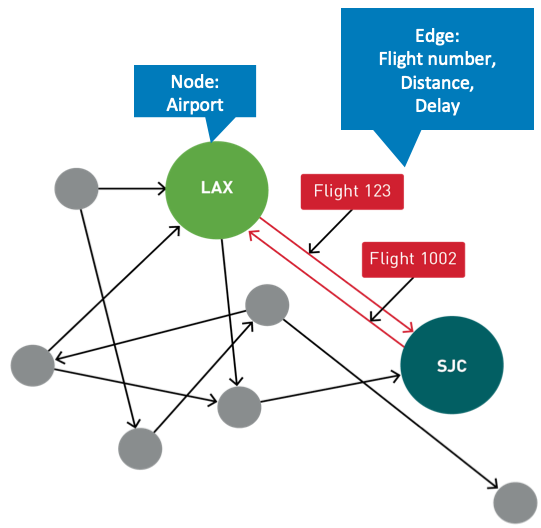Retrieving Data: Insights and Innovations in Data Management

Recent developments in information technology have placed a strong focus on retrieving data efficiently and accurately. Organizations across industries rely on data to guide strategic decisions and optimize operations. Research and innovation in data management aim to provide reliable methods for accessing, processing, and interpreting vast amounts of data. The continuous expansion of data sources creates both opportunities and challenges for professionals who work with large databases and real-time streams.
This article examines the latest trends and techniques in retrieving data. It covers topics including data querying methods, technological solutions, and performance metrics that influence how quickly and accurately information is obtained and utilized. Reporting on recent industry statistics and research findings, this piece aims to offer professionals and interested readers an up-to-date perspective on managing data effectively.
What Does Retrieving Data Mean?
Retrieving data refers to the process of accessing stored information from a database or dataset. This process includes sending queries, processing results, and delivering information to the end user or application. Data retrieval remains central to analytics, reporting, and decision-making processes across multiple fields.
New Strategies in Data Retrieval
Technological progress has stimulated the development of several new approaches for retrieving large data sets. Enterprises and government bodies use advanced algorithms and optimized query languages to secure timely and reliable access to needed data. Several key components play a role in these improvements:
• Increased processing power in data centers
• Adoption of distributed architectures
• Implementation of caching mechanisms to reduce repetitive requests
• Use of machine learning models to prefetch often-accessed data
Many companies have invested in infrastructure that supports the scalability and flexibility of data retrieval. Modern databases handle requests from thousands of concurrent users while delivering results in seconds. Vendors offer varying solutions tailored to the specific needs of businesses and research organizations.
Data Retrieval Techniques and Their Implementation
Experts in data science and IT use a range of techniques to store and retrieve data based on the requirements of their systems. Data repositories now include traditional relational databases, document-based storage, and specialized systems like graph databases.
One method involves using structured query languages to interact with conventional databases. An optimized SQL query can reduce lag time and enhance performance when retrieving records. In contrast, non-relational databases employ flexible schemas and distributed systems, which allow for efficient handling of semi-structured or unstructured data. You can also rely on cloud ETL tools to streamline the extraction and transformation of data before it’s loaded into SQL or NoSQL systems, ensuring faster and more reliable access.
The following table shows a comparison of common data retrieval methods with sample performance indicators:
| Method | Average Speed (ms) | Error Rate (%) |
|---|---|---|
| SQL Query | 150 | 2.1 |
| NoSQL Query | 120 | 1.8 |
| API Call | 200 | 3.5 |
| Custom Algorithm | 100 | 1.2 |
The table above provides a simplified view of how different retrieval methods perform under controlled conditions. Results may vary based on the system configuration, network latency, and query complexity.
Technological Innovations and Their Impact
Recent advancements in hardware and software have greatly improved data retrieval capabilities. Companies now use specialized chips and parallel processing to manage larger volumes of data. Additionally, major technological enterprises develop custom solutions that integrate machine learning techniques to detect patterns and pre-load data.
An example is adaptive indexing. This technique adjusts database indexes automatically in response to changing query performance. By focusing on frequently accessed data segments, systems deliver higher throughput and minimize computational overhead.
Another area receiving attention is the integration of real-time analytics. Companies utilize streaming data analysis to oversee operations and make prompt adjustments. Techniques like in-memory databases store and handle data at speeds that traditional disk-based storage cannot match.
Many industries benefit from these practices. In retail, faster data retrieval supports dynamic pricing models and customer personalization. Likewise, healthcare applications depend on immediate access to patient records and diagnostic data. Such innovations help improve service quality and operational efficiency.

Case Studies and Industry Examples
Several organizations have recently reported significant gains from optimizing data retrieval methods. Global retail companies, for instance, use innovative data management strategies for quick inventory checks and sales analytics. Financial institutions implement advanced retrieval methods to process millions of transactions daily, ensuring compliance with regulatory requirements and enhancing customer service.
A technology company, which upgraded its data retrieval system, reported a 25% reduction in query response time over the past year. This success stemmed from combining faster processing techniques with minimal redundancies in data set maintenance. Data engineers restructured indexing strategies and applied load balancing across the network. Such measures reduced processing strain during peak hours and increased overall system reliability.
Similarly, a healthcare network invested in new data retrieval systems to support electronic health record systems. By decreasing the time to access patient histories, the system supported swift diagnostic procedures and improved emergency responses. These improvements directly affected patient care and resource management.
The table below presents data from selected organizations on how improvements in data retrieval affected overall performance:
| Sector | Average Query Time Before (ms) | Average Query Time After (ms) | Improvement (%) |
|---|---|---|---|
| Retail | 180 | 135 | 25 |
| Finance | 220 | 165 | 25 |
| Healthcare | 200 | 150 | 25 |
| Technology | 160 | 120 | 25 |
Numbers in the table illustrate a common trend across sectors: modernizing retrieval systems can consistently lower response times by significant margins. Similar progress in less data-intensive fields often translates to operational savings and enhanced user experiences.
Challenges in Data Retrieval
Managing and retrieving data remains complex, despite modern infrastructures. Organizations face obstacles like data consistency, handling large volumes of information, and ensuring secure access. Reliability under heavy loads often represents a major implementation challenge.
Data privacy regulations add another layer of complexity. Companies must obtain sensitive information responsibly and secure user consent when accessing personal data. Implementing robust security protocols is crucial to prevent unauthorized data access and ensure compliance with legal requirements.
Technical hurdles also exist. Maintaining system performance involves determining optimal hardware resources, managing network traffic, and balancing computational loads. Engineers continue to innovate in database design, optimization of query strategies, and distribution of data processing tasks in order to address these challenges.
Data integrity issues emerge when systems experience unexpected failures or inconsistencies between the live database and backup replicas. This situation necessitates the deployment of rigorous checks and balances to restore data accurately after incidents and prevent future occurrences.
Future Trends in Retrieving Data
The next years are likely to see further improvements in data retrieval methods. Researchers and engineers experiment with new materials and technologies that promise to transform data management. Quantum computing, for instance, brings a potential shift in processing paradigms that could result in breakthroughs in speed and capacity.
Another trend focuses on distributed ledger technologies. Although many associate this with cryptocurrencies, distributed ledgers can support data verification across multiple computers without a central repository. Such structures may enhance the accuracy and reliability of data retrieval in multi-user and multi-device contexts.
Edge computing also contributes to evolving practices. This method processes data closer to its source rather than sending information to centralized systems. It reduces transmission delays and fortifies the performance of applications that rely on immediate updates. In manufacturing environments, edge solutions support rapid decision-making, minimizing downtime and increasing production efficiency.
Simultaneously, organizations look to improve user interactions with data retrieval systems. The design of intuitive interfaces, often built on web-based platforms, enhances accessibility for non-technical staff. Dashboards and visual reporting mechanisms allow users to see real-time progress and outcomes without needing extensive technical knowledge.
Researchers and thought leaders in technology emphasize the need to combine algorithmic improvements with practical, operational insights. Integrating user feedback into the development lifecycle helps create tools that match the hands-on requirements of day-to-day operations.
Strategies for Effective Data Management
Completing the cycle of efficient data retrieval requires coordination across several components of data management. System administrators and developers continuously review and refine methodologies, ensuring that data environments remain agile and responsive. Key strategies include:
• Regularly updating hardware and software components to handle increased loads
• Monitoring system performance and adjusting parameters for optimal output
• Investing in team training and development to facilitate the adoption of new tools
• Implementing strict security and compliance protocols to protect sensitive information
These measures not only improve retrieval times but also minimize system downtime and reduce the risk of data loss. Organizations benefit from a proactive approach to managing both the hardware and software components of their data systems.
Some companies leverage cloud-based solutions. Cloud providers offer scalable infrastructure and specialized tools to support data retrieval tasks. Using cloud computing often equates to faster implementation of updates and seamless integration of new data sources.
Another recommended approach involves collaboration between IT departments and business units. This interaction ensures that data management aligns with organizational objectives while meeting the specific needs of each department. Open communication channels help identify bottlenecks and rapidly deploy corrective measures.
Expert Opinions on Data Retrieval
Industry analysts share an optimistic outlook regarding the future of data retrieval strategies. Professionals stress that organizations must continuously review their systems and adopt new practices as technology evolves. Peer-reviewed studies and industry benchmarks show consistent performance improvements as companies modernize their data infrastructures.
Tech symposiums around the globe provide regular insights into innovative methods. Presentations and panel discussions at such events highlight the benefits of modern retrieval systems and the challenges that remain. Attendees express that achieving high performance in data retrieval requires an ongoing commitment to hardware upgrades, staff training, and process re-engineering.
Interviews with system architects reveal a consensus that the focus should remain on reliability and speed of access rather than solely on expanding storage capacity. These experts note that the balance between data volume and retrieval efficiency plays a major role in shaping future investments.
Conclusion and Outlook
Organizations depend on retrieving data to drive informed decisions and efficient operations. As technologies continue to evolve, professionals witness constant improvements in data management practices. The emphasis lies in combining robust hardware solutions with intelligent software strategies to increase data processing efficiency without sacrificing security or reliability.
Businesses stand to benefit significantly from investing in modern data retrieval systems. Focusing on improving query speed, managing vast data sets responsibly, and adapting to new technological breakthroughs will play a central role in the competitive landscape. Stakeholders from various sectors continue to monitor developments and share success stories, encouraging further research and investment.
New trends such as quantum computing, distributed ledger technology, and edge computing hold the potential to substantially alter current practices. Data retrieval professionals remain dedicated to refining techniques and collaborating across disciplines to ensure that systems deliver accurate information rapidly and reliably.
The compiled data and performance metrics reinforce the importance of constantly evaluating data retrieval methods. With controlled experiments and real-life case studies, the field appears ready to meet rising demands from businesses and public institutions. Future progress will depend on collaboration, innovation, and a shared commitment to building resilient information systems.
This article has examined key elements of retrieving data, presenting current strategies, challenges, and emerging trends without resorting to unnecessarily flowery language. By focusing on actionable insights and employing transparent performance data, the narrative aims to serve as a useful resource for professionals and decision-makers in the field of data management.
